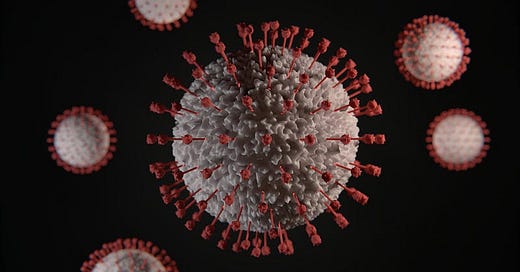
Terminologies Used:
Ras Pathway: A cellular signaling pathway that regulates cell growth, differentiation, and survival, frequently dysregulated in cancer.
Episomes: Genetic elements capable of existing as either extrachromosomal DNA or integrating into the host cell’s genome, often used as vectors in gene therapy.
Insertional Mutagenesis: A process where the insertion of foreign DNA into the host genome can disrupt normal gene function and potentially lead to genetic mutations.
Immune Response Modifiers: Substances or agents that modulate the immune system’s response, typically used in cancer treatment to enhance immune recognition and elimination of tumor cells.
One of the tiniest biological entities, which is not even truly alive (or dead), caused the death of over 6 million humans in the recent pandemic. Despite the severity of the coronavirus, several other viruses have been harnessed to treat cancer, a disease that caused the death of over 10 million people in 2020.
Viruses such as Adenovirus contain a part of the genome that interferes with p53-mediated pathways to protect themselves against the toxic effects activated upon entering the cell. Additional diverse genes are used to induce cells into the S-phase to facilitate viral replication within the host cells. Continuous replication ultimately leads to the lysis of the cell.
Given that p53 pathways are already impaired in cancer cells, and these cells are continuously dividing and in the S-phase, the viral genes that establish this environment in normal cells are unnecessary in cancerous cells. Therefore, the deletion of these genes makes the viruses tumor selective, enabling them to survive inside cancer cells while being unable to replicate and survive in healthy cells where p53 pathways are intact. These engineered viruses are called Oncolytic Viruses.
Certain RNA viruses are naturally tumor selective. For example, the reovirus contains a double-stranded RNA (dsRNA) genome. This dsRNA genome activates PKR and stimulates the release of interferons in healthy cells, leading to apoptosis and limiting the spread of the virus. However, approximately 30% of human tumors have activating mutations in the Ras pathway, which inhibits PKR activation and allows the growth and replication of the virus specifically within those tumor cells.
Using viruses in therapy has always been challenging due to associated risks. Viruses that integrate their genome into ours can cause insertional mutagenesis. Therefore, viruses used for treatment are generally of the non-integrating type and exist as episomes. However, there is still a possibility of recombination between viral vectors used for treatment and latent viruses already present in our cells, which could confer full replicative potential to our modified viruses.
Numerous clinical trials have been conducted using different viruses, primarily including Adenoviruses, HSV, Reoviruses, and Vaccinia Virus. These viruses have shown to be safe with minimal side effects upon administration. However, among 300 patients treated, one 18-year-old patient succumbed to the treatment.
Despite several efforts the deletions and mutations that renders the virus tumor selective also limits potency and thus affecting its efficacy as therapeutics. The response rate among cancer patients participating in trials does not exceed 50% in most cases. Therefore, various anti-tumor genes have been added to the viral vectors to enhance the anti-tumor effect.
The addition of genes encoding pro-drug converting enzymes, which convert anti-cancer prodrugs into active drugs, has shown to boost the anti-tumor effects of oncolytic viruses when incorporated into the viral genome. Genes encoding immune response modifiers have also yielded positive results. Lastly, combining these viruses with other treatments such as chemotherapy or radiation therapy enhances the outcomes of conventional therapy.
Despite significant advancements, viral therapies against cancer still face challenges in demonstrating substantial clinical outcomes. Non-viral methods of gene therapy have become increasingly popular due to their ease of construction, delivery, and reduced risk.
It remains fascinating that the engineering practices in biology enable us to modify a deadly microscopic entity into precise delivery vehicles for therapeutic purposes.
Further Reading:
Ras Pathway: https://www.nature.com/articles/s41571-022-00671-9
Episone: Control of Viral Latency by Episome Maintenance Proteins: Trends in Microbiology (cell.com)
Cancer Immunotherapies: https://bmcmedicine.biomedcentral.com/articles/10.1186/s12916-016-0623-5
References:




